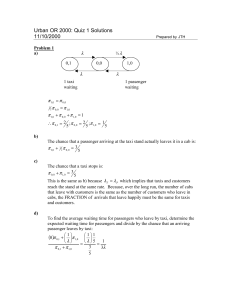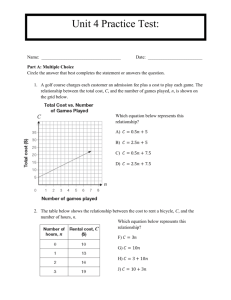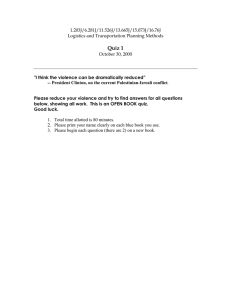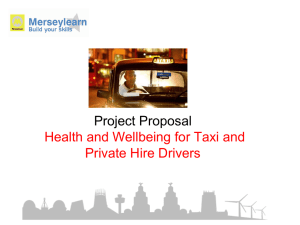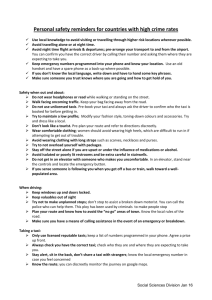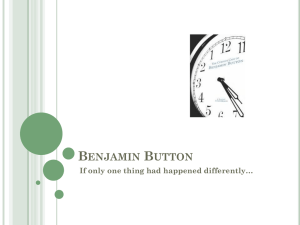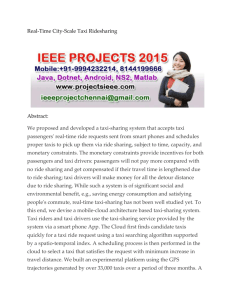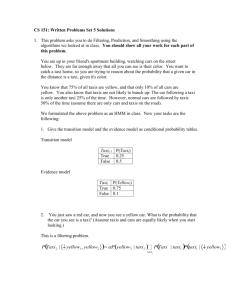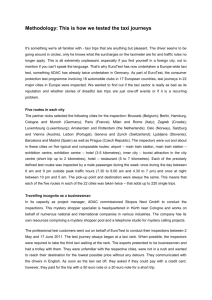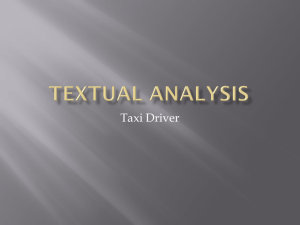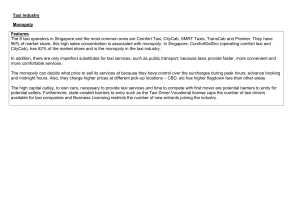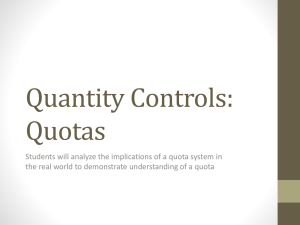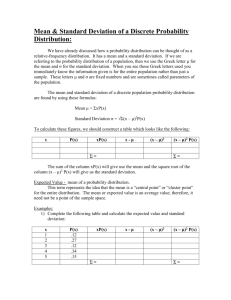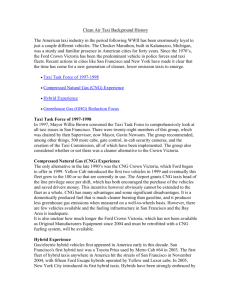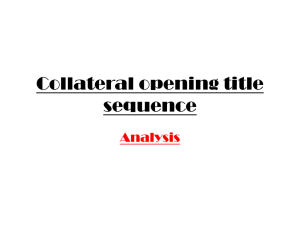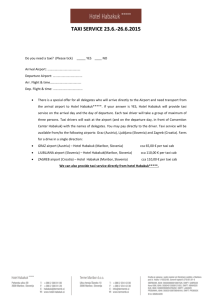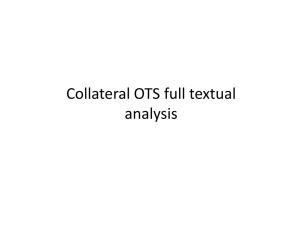Taxi Demand Modeling to ensure appropriate taxi supply
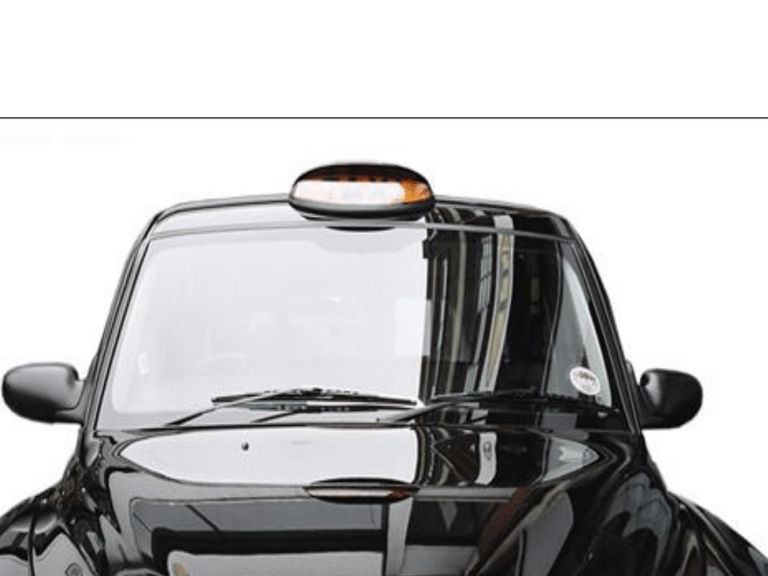
Taxi Demand Modeling to ensure appropriate taxi supply
James M Cooper, Transport Research Institute,
Edinburgh Napier University
Wither Taxicab?
• Recognizable and understood mode.
• Single, dual and multiple licensing types.
• Supply impacted by licensed restricted and free entry markets in similar measure
• Demand analysis models and their application
What are taxi controls?
• Quality, Quantity and Economic Regulation
(QQE)
• Deregulatory Movement
• Taxi Reform
• A central government view
Unpacking the Taxi Model
• Model?
• Analysis by area of regulation
• Aggregation, temporal and spatial difference
• Legislated Tick Boxes?
So what does the model do, really?
• Applied in the UK to restricted markets
• Seeks to identify where such restriction is
“harmful”
• Demonstrates an index of the level of harm
• By extension, identifies the increase in licenses required to mitigate the level of harm
• BUT: based on observed delay in one primary market
How does this work?
Definition of an Index of SUD (ISUD)
ISUD= APD x ED x Pl x HP
Where:
APD Average passenger delay across all time periods
ED Excess Demand, during the Monday to Friday daytime period
PI The proportion of taxi users travelling in hours where the overall average delay at the stance was greater than or equal to 1 minute
HP Adjustment factor where peaking is present (1 if no peaking; 0.5 with peaked demand)
Comparative Results
Best Practice
• Department for Transport 2006
• Scottish Government 2007
How has best practice helped?
• YES!
How has best practice helped?
• YES!
• Expanded beyond rank observation
• Introduced “temporal” assessment based on peaks in demand
• Suggested (but not imposed) seasonality
Has best practice covered all bases?
• NO!
Has best practice covered all bases?
• NO!
• Impact of a licensing based solution
• One solution need not fit all
• Perverse and negative effects
• Non-licensing solutions
Some Driver Perceptions
Night Time Reservations
Achieving time savings
Passenger Delay
Non Licensing Solutions
Other Issues at play
Traffic Signal Delay
Translated in to time saving
Time saving in arrivals at stance is calculated on the basis of:
TSAS = (CAD x EOT) / (EOT + IGP)
Where
TSAS = Time Saving at Stance
CAD = Current arrival delay, departing from Hope
Street to arrival at Gordon Street
EGT =Effective Green Time
IGP = Increase applied to Green Phase
Impact of time saving
Passenger Delay, at Gordon Street
A quick reminder of principle
• Duties
• Responsibilities
– VITALLY IMPORTANT:
THIS NOT A DEFENSE OF A RESTRICTIVE MARKET
• Impacts
• Utopia gained?
Final Critique
• Does the use of “new” demand models provide the most appropriate method of determining market control?
• Why are we ignoring infrastructure, price impact or quality controls?
So what next?
• Optimality
• Licensinse and infrastructre are both appropriate
• Modeled approach not the antithesis of the free market, but its facilitator
Optimal Information as the guardian of optimal services
• Restricted markets must not be closed shops
• Deresricted markets must not leave everything to the market
• Supply issues remain in derestricted market where infrastructure not appropriate or optimal
• Actual form of regulation does not replace the need to uderstand, test and respond to the market
Contact:
James Cooper
TRI Taxi Studies Group j.cooper@napier.ac.uk
www.tri-napier.org
www.taxiresearch.net

